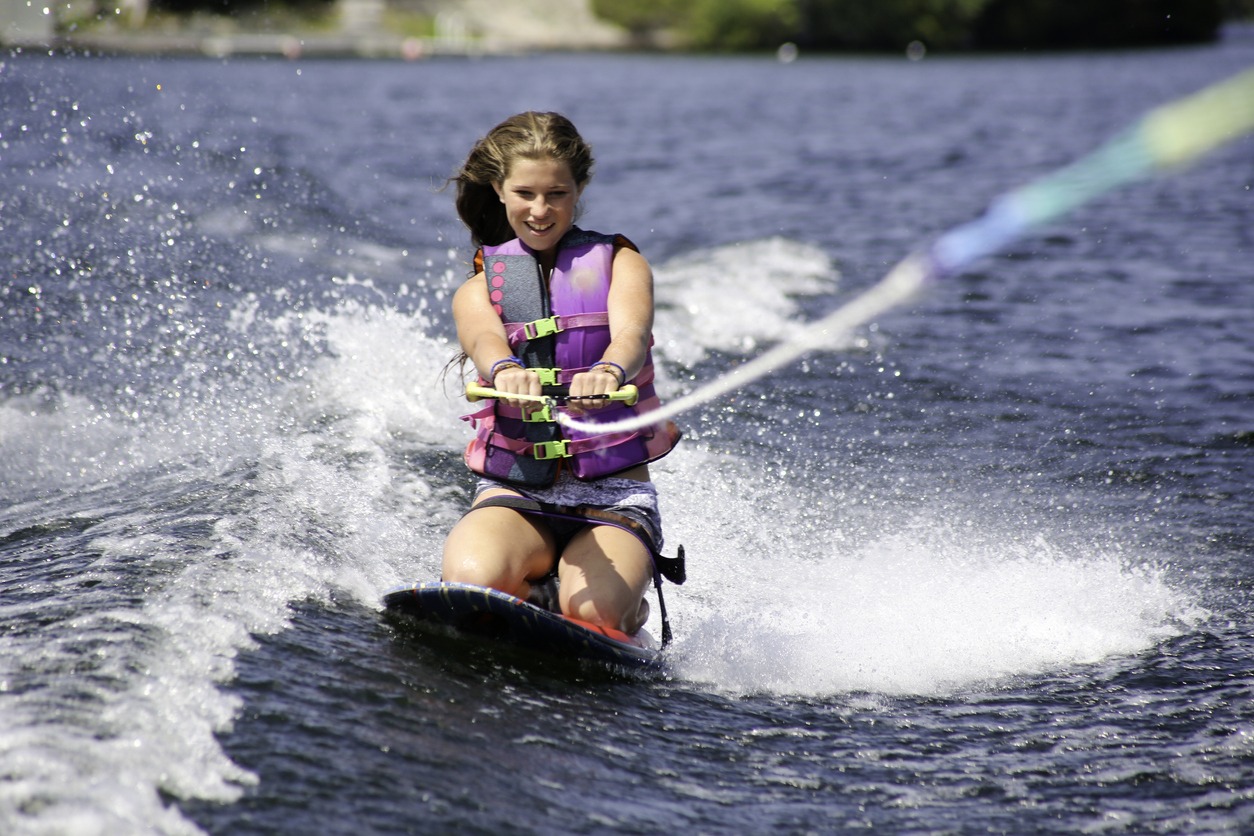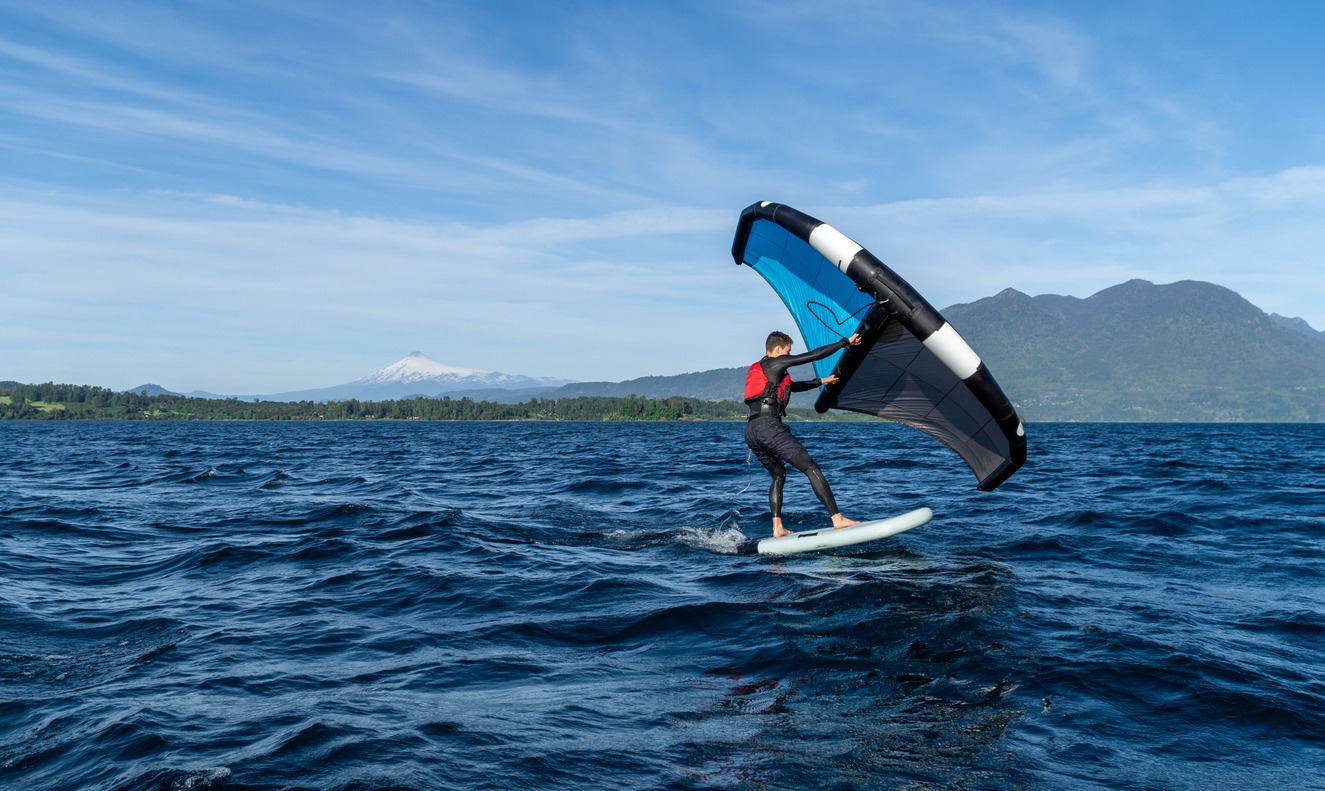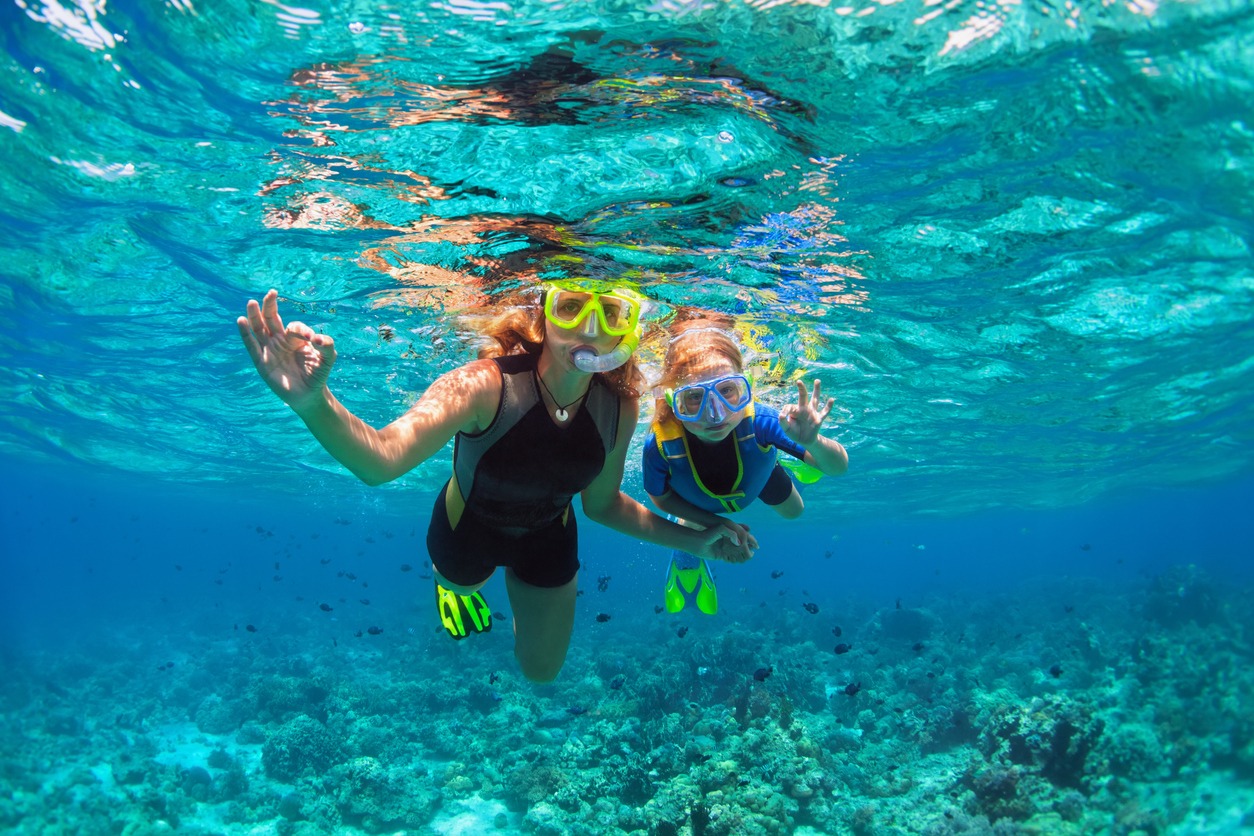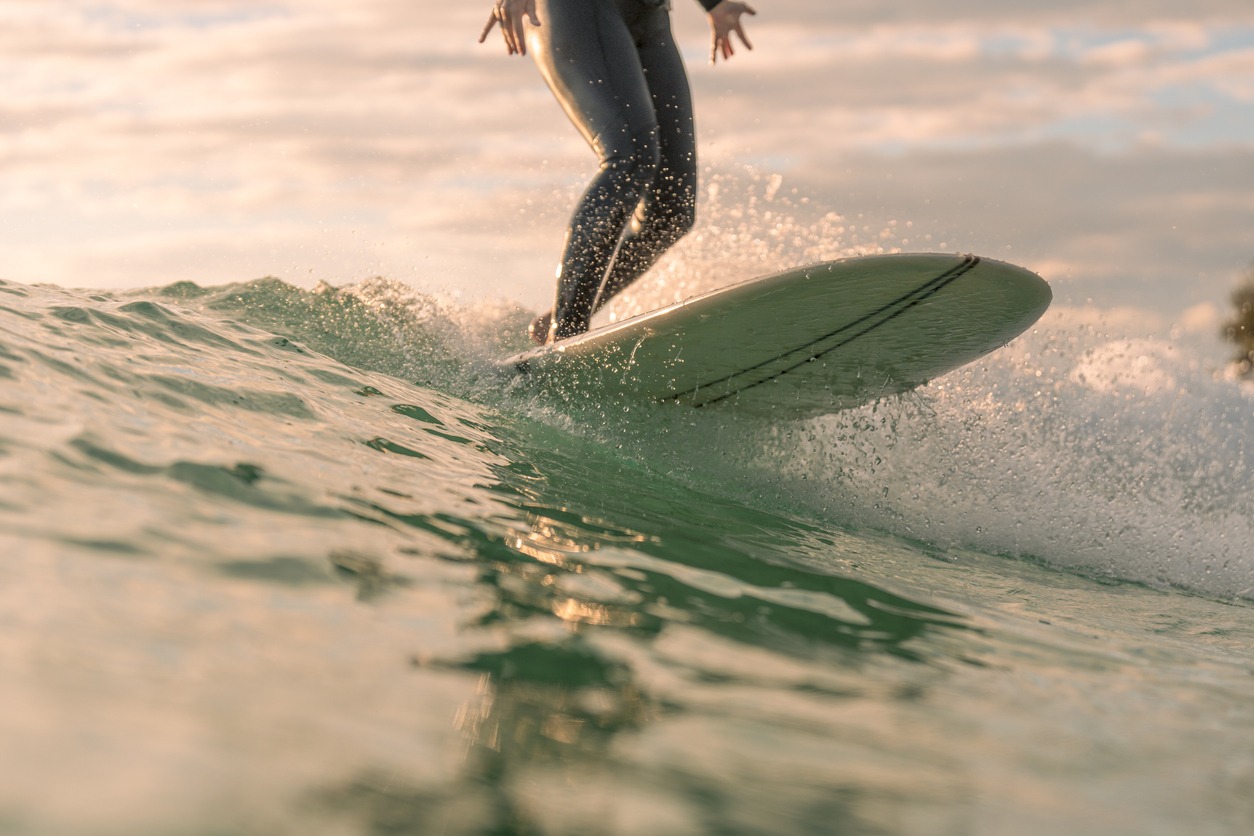Beginner’s Guide to Kitesurfing: What You Need to Know
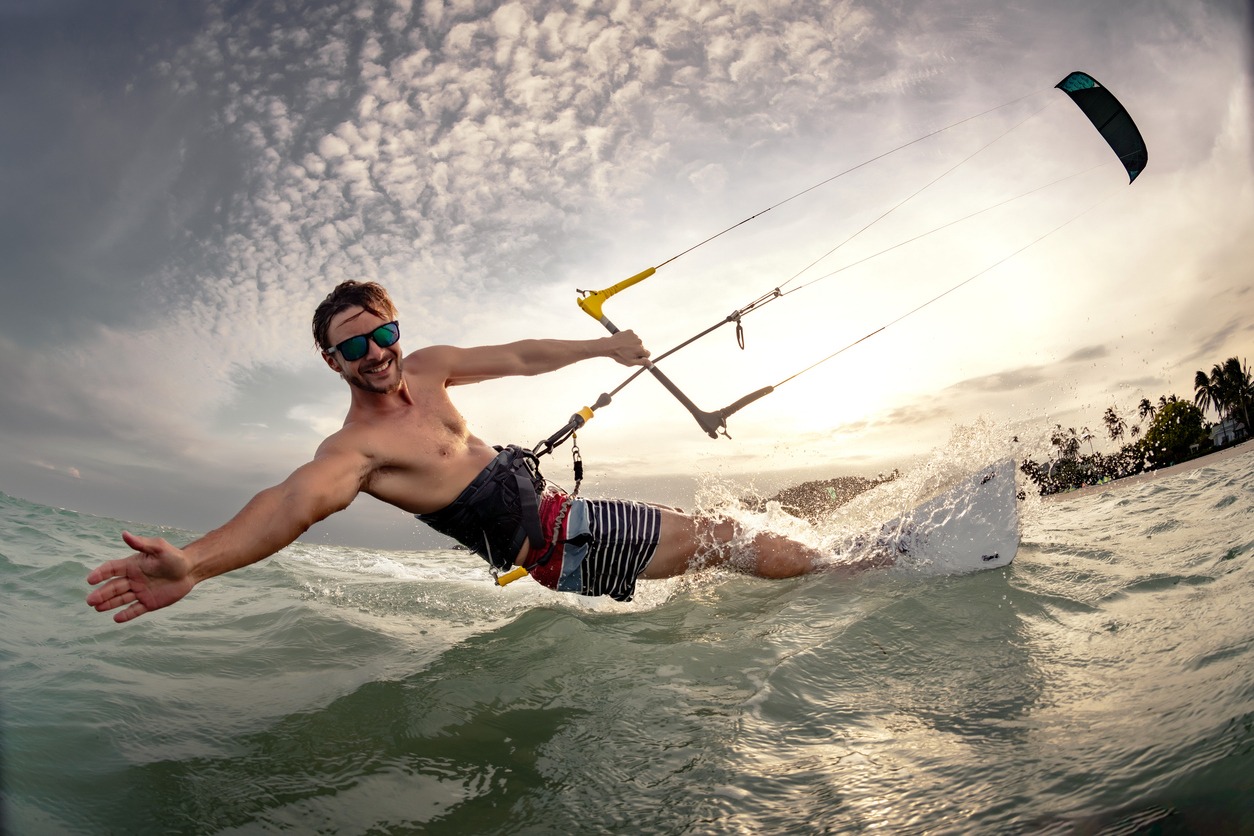
Kitesurfing combines wind power, water sports, and skill for an exhilarating experience. As a beginner, you'll need essential equipment like a kite, control bar, harness, and board. Safety is paramount, so always wear a life jacket and helmet. Start by learning in shallow, flat waters with consistent winds. Command kite flying skills, including steering, body dragging, and self-rescue techniques. Progress to water starts by maintaining proper kite position and body posture. Avoid common mistakes by taking lessons from qualified instructors and using appropriate safety gear. With patience and practice, you'll soon be riding the waves. Explore more about this thrilling sport to accelerate your learning curve.
Understanding Kitesurfing Basics
Plunge into the exhilarating world of kitesurfing, where wind, water, and skill combine to create an unforgettable experience. As a beginner, you'll quickly learn that kitesurfing is more than just riding a board across the water. It's a dynamic sport that blends elements of surfing, windsurfing, and paragliding, offering diverse experiences across various water bodies. Kite selection is an essential aspect of kitesurfing, as the size, shape, and material of the kite can greatly impact your performance and safety.
To get started, you'll need to become an expert in the basics of kite control and board handling. Understanding wind patterns and water conditions is pivotal for your safety and progress. That's why it's vital to begin with lessons from a qualified instructor. They'll teach you proper kite handling techniques, safety protocols, and equipment management.
During your initial lessons, you'll learn how to launch, steer, and land your kite safely. You'll also practice body dragging, which helps you get comfortable with the kite's power before introducing the board. As you progress, you'll develop the skills to ride upwind, perform basic turns, and eventually attempt more advanced maneuvers. Remember, patience and consistent practice are key to becoming a master in this thrilling water sport.
Essential Equipment for Beginners
Now that you've grasped the basics of kitesurfing, it's time to gear up. As a beginner, you'll need essential equipment including a kite, control bar, high-strength lines, harness, and board. When selecting a kite, prioritize models with good depower capability, easy relaunch, and forgiving flying characteristics. Popular beginner-friendly options include the Duotone Evo, Cabrinha Moto, and North Reach. Wing foiling offers a more travel-friendly setup compared to kitesurfing and windsurfing equipment, making it an attractive option for some.
Choose a kite size appropriate for your weight and intended wind conditions, and opt for a shorter leash for added safety. Don't forget key safety equipment like a helmet, life jacket, and protective clothing to minimize injury risks.
Proper kite maintenance is fundamental for safe and reliable performance. Regularly clean and inspect your gear, and always follow manufacturer guidelines. This will help guarantee your equipment functions correctly and lasts longer.
Safety First: Key Precautions
Safety is paramount in kitesurfing. As a beginner, you must prioritize your well-being by adhering to essential safety precautions. First and foremost, always wear a certified life jacket and helmet to protect yourself from impacts and ascertain visibility. These critical pieces of safety equipment are non-negotiable.
Before hitting the water, thoroughly check weather forecasts and wind conditions. Understanding the environment you'll be kitesurfing in is indispensable for your safety. Additionally, familiarize yourself with proper safety techniques, including kite relaunching, self-rescue, and emergency procedures. These skills could save your life in pivotal situations.
To develop essential skills and safety awareness, enroll in Kitesurfing Lessons with a qualified kitesurf instructor. They'll teach you how to use the safety system and safety leash correctly, which are integral components of your equipment.
Lastly, respect local rules and regulations, staying clear of obstacles, swimmers, and other water users. By following these key precautions and continuously improving your knowledge of safety techniques, you'll be well-prepared to enjoy kitesurfing while minimizing risks and guaranteeing a positive experience on the water.
Choosing the Right Learning Environment
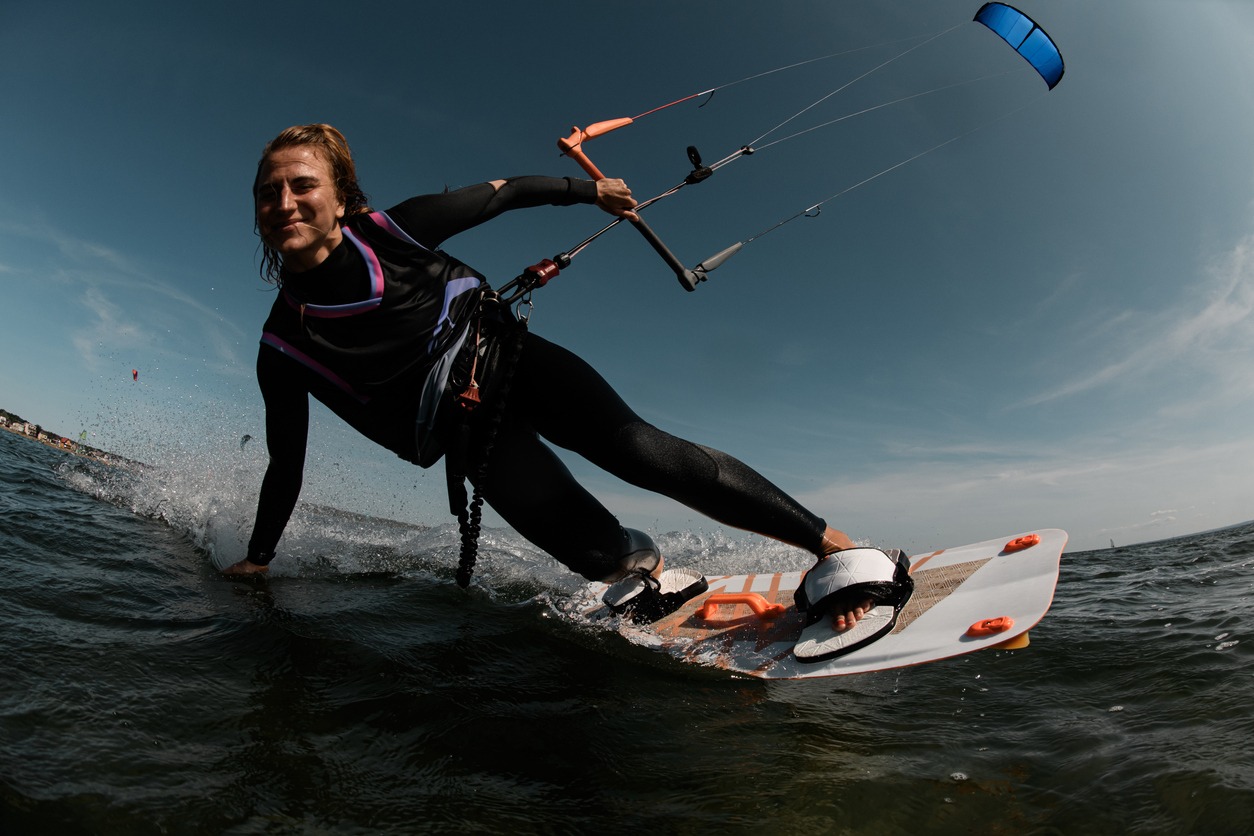
Selecting an appropriate learning environment is imperative for your kitesurfing odyssey. As a new rider, you'll need to find a location that offers the right conditions for beginners. Look for flat, shallow waters with consistent, moderate winds between 12-20 knots. These conditions provide the perfect balance of power and control for your first attempts at riding.
Protected bays or lagoons are ideal starting points, as they minimize obstacles and allow for controlled progression. You'll want to avoid offshore winds, which can make learning more challenging and potentially dangerous. Consider water temperature, depth, and currents when choosing your spot.
It's essential to start your kitesurfing expedition near a qualified school or instructor. They'll provide the right equipment and guidance you need to begin safely. A good learning environment should offer ample space for beginners to practice without interfering with more experienced riders.
Mastering Fundamental Kite Flying Skills
The foundation of kitesurfing lies in commanding fundamental kite flying skills. Before you tackle the waves, you'll need to become proficient in the basics using a trainer kite. This smaller, more manageable kite will help you understand the wind window, power zone, and essential kite control techniques.
As you progress, focus on:
- Mastering body dragging, self-launching, and self-landing
- Steering the kite through various wind conditions
- Practicing emergency procedures like quick-release and kite-kill
These skills form the bedrock of safe kitesurfing. Learn to govern the wind window, controlling your kite's power delivery and depower capabilities. This understanding is essential for maintaining control in different wind conditions.
Don't rush the learning process. Spend time honing your ability to read wind speed, direction, and gusts. This knowledge will help you adapt your kite control and positioning accordingly. Remember, safety is paramount in kitesurfing. Familiarize yourself with emergency procedures to de-power your kite quickly if you lose control.
Progressing to Water Starts
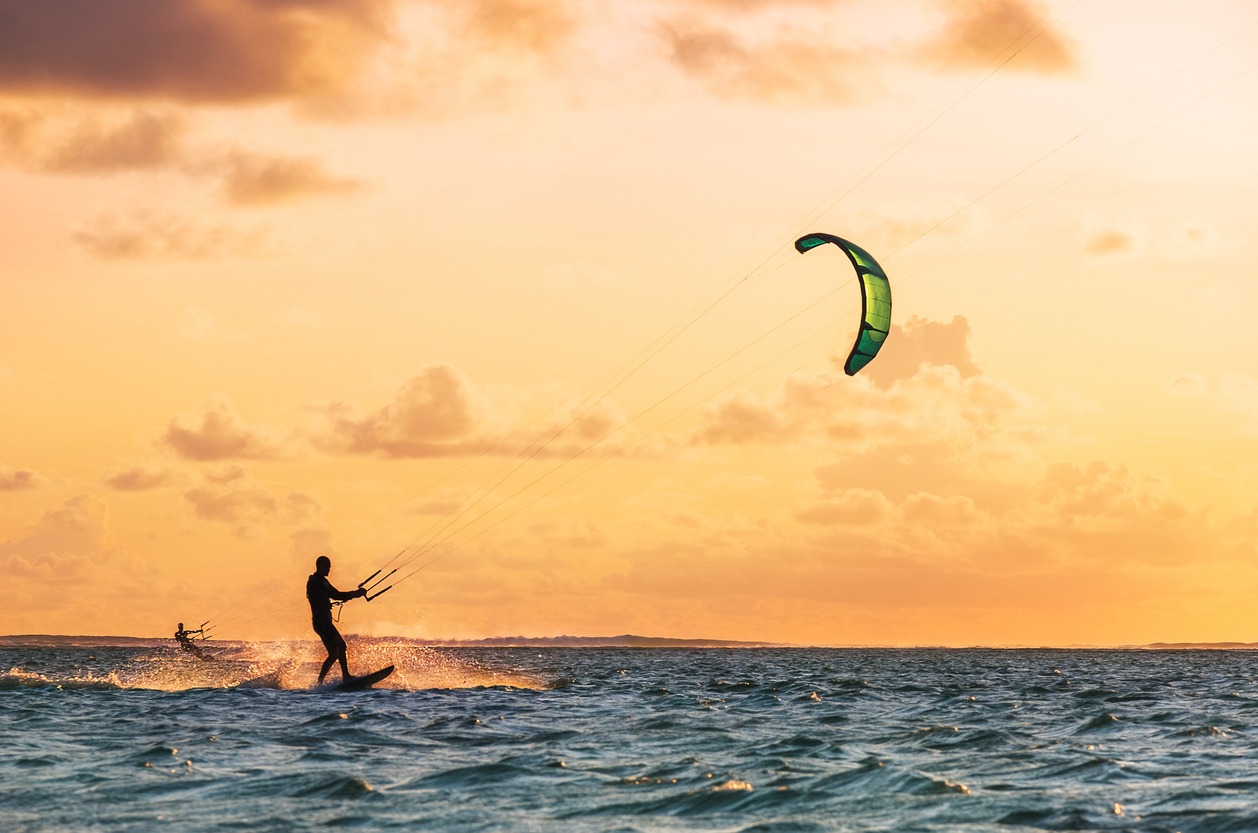
Once you've perfected kite control on land, it's time to take your skills to the water. The water start is an essential technique that'll allow you to harness the kite's power and get up on your board. To master this skill, focus on keeping the kite at the wind window's edge while maintaining constant pull.
Proper body positioning and weight distribution are key to a successful water start. Push against the board with your back foot, keep your front knee bent, and gradually increase the kite's power as your board lifts from the water. As you progress, you'll need to learn water relaunch techniques to regain control if you fall during a session.
Remember to concentrate on controlling the kite throughout the process. By keeping the kite steady and applying consistent power, you'll have a better chance of achieving a smooth water start. Once you've mastered this technique, you'll be able to start upwind riding and explore kitesurfing's full potential. With practice and patience, you'll soon find yourself gliding across the water, powered by the wind and your newfound skills.
Common Mistakes to Avoid
Avoiding common pitfalls is indispensable for safe and effective kitesurfing progression. As beginners are completely new to the sport, it's imperative to recognize that proper lessons are essential. Don't rush into kitesurfing without adequate training, as this can lead to dangerous situations and hinder your advancement.
One of the most critical aspects of learning to kitesurf is controlling the kite. Start with a trainer kite before transitioning to a full-sized one. This will help you develop the necessary skills and confidence. When you're ready for your first kitesurfing experience, always use safety equipment, including a quick release system and safety leash.
To ensure a successful and safe kitesurfing journey, keep these key points in mind:
- Don't overestimate your abilities or choose an inappropriate kite size for the wind conditions.
- Master fundamental skills like water starts before attempting complex maneuvers.
- Always follow safety protocols, especially in strong winds.
Next Steps: Advancing Your Skills
After conquering the fundamentals, you'll be enthusiastic to escalate your kitesurfing abilities to new levels. As you progress, focus on developing advanced techniques like jumping, looping, and riding waves. These skills will enhance your kite control and body movements, allowing you to perform impressive Big Air maneuvers and navigate challenging conditions.
To amplify your performance, maintain your fitness, balance, and coordination through complementary sports like surfing, wakeboarding, and mountain boarding. These board sports will help you refine your skills and improve your overall kitesurfing prowess. For adrenaline junkies seeking more power and lift, consider investing in high-quality gear like race-oriented Foil kites and specialized boards.
Joining a local kitesurfing club or community can provide precious opportunities to learn from experienced peers and participate in competitions. Seek out coaching and video analysis to identify and address technical weaknesses, leading to faster skill advancement. By focusing on controlling the kite with precision and efficiency, you'll access new levels of speed and control. Remember, continuous practice and dedication are key to commanding this exhilarating water sport.

